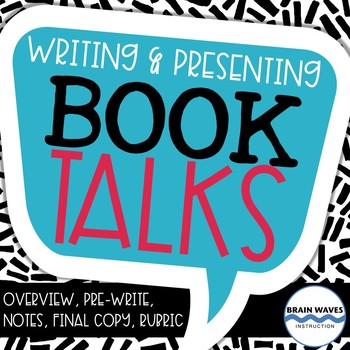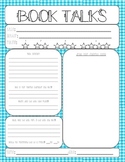

Teaching Split Digraphs


Crafting Sentences Video and Freebie
Instead of typing everything I did, I created a screen cast showing you the Smart Board Notebook I created to go with this lesson. Click the video below for the lesson. I also put up my Notebook file on SMART Exchange, and you can check out the file by clicking HERE. Disclaimer: I know that this doesn't work for every type of sentence, but it was great beginning for us to start writing complete thoughts.
To get the sentence graphic organizer and lesson plan I used with the lesson, click the image below.
I hope everyone is having a fabulous summer!

Ways to Teach Phonemic Awarenss
Guess the Word
Push and Say
Songs and Movement
Book Choices You Might Explore


Learn Like a PIRATE: A Must-Read!
Last summer I was immersed in Dave Burgess' Teach Like a PIRATE. What a refreshing and motivational read! This is one book that sticks with you, and the innovative ideas linger in your mind, are just best practice, and involve risk-taking from the both the teacher and the students. So, I was beyond thrilled when I saw that Learn Like a PIRATE had been published and knew that it would be at the top of my summer professional reading! This easy to read, thought-provoking book written by teacher Paul Solarz, takes the pirate analogy and acronym to the next level: that of our students.
More specifically, Solarz's focus of the book is student empowerment through the creation of a student-led classroom. How can our students learn like a PIRATE? Solarz uses the PIRATE acronym to emphasize strategies for an active and engaged classroom.
Paul Solarz's infectious enthusiasm for teaching is invigorating and just what a weary teacher needs to regroup after a long school year. If you are looking for new and innovative teaching strategies to re-energize your teaching and your classroom, then this book is for you! Written in an easy to read format, the book is entertaining, practical, and grows you as an educator as Solarz shares teaching techniques and strategies that you can implement to transform your students into collaborative, risk-taking, and creative pirates!
Throughout the majority of the book, the author discusses each component of the PIRATE acronym in depth. He offers the research and his own experiences of how to structure, implement, and maintain a PIRATE classroom. Topics include: teacher evaluations, classroom management, discipline, grades, literature circles, twenty-first century skills, and so much more! Sprinkled throughout the book are QR codes which link to graphics and to websites such as the author's own personal classroom blog for even more ideas and authentic examples of how to implement the theory into practice.
This must-read will appeal to teachers of all grade levels. The PIRATE activities and strategies have to be modified depending on the age of your students, but many of the suggestions in the book can be implemented into a K-2 classroom! In fact, my own personal goal as I read and reflect on Learn Like a PIRATE is to take the strategies and look for ways that they will work in a primary classroom. As a literacy coach and reading specialist, I may not be able to apply all of the strategies into an intervention setting, but I am excited to share these ideas with classroom teachers!
On my own blog, I have just started to write about my reflections from my reading. Join me on Sundays, as I present the important "nuggets" from my reading and my thinking of ways to adapt these strategies into a primary classroom. You can read the first post here and the latest post here.
If you have read the book or are in the middle of reading it, I would love for you to share your ideas of how to create a student-led classroom!


Move! Groove! Read!

Book Talks on the Menu
 Book talks can be as simple or complex as you want to make them. Students can have a scheduled time for sharing and even have a limited time for their presentation, but teachers can also make an event out of the book talk day. Look at the image to the right. Most kids would love the opportunity to dine in a "Paris Cafe" and have cookies and milk during their sharing time. Check out this image and post from Second Grade Smarty Arties. This would be so much fun.
Book talks can be as simple or complex as you want to make them. Students can have a scheduled time for sharing and even have a limited time for their presentation, but teachers can also make an event out of the book talk day. Look at the image to the right. Most kids would love the opportunity to dine in a "Paris Cafe" and have cookies and milk during their sharing time. Check out this image and post from Second Grade Smarty Arties. This would be so much fun.  Another great option that may be easier to do is a graffiti wall. You can give your students time to record important quotes or have them share a brief introduction. The key with whatever you choose as the book talk format is to allow time for conversation and make it a positive experience for the kids. Book talks can also be brief and worked into the daily routine for much of the time.
Another great option that may be easier to do is a graffiti wall. You can give your students time to record important quotes or have them share a brief introduction. The key with whatever you choose as the book talk format is to allow time for conversation and make it a positive experience for the kids. Book talks can also be brief and worked into the daily routine for much of the time.With struggling readers, you might have a parent volunteer come in for a lunch bunch book club. Last year, we had an enthusiastic parent come, and all she did was chat with the kids about what they were reading and just daily routines. It really encouraged the group and made a huge difference for them (and they loved the lunchtime attention).


10 Ways Teachers Kill a Love of Reading
We used to do our reading block in the morning, every day, but our library time was scheduled on Thursday afternoons.
So, in the morning, I worked so hard to foster a love of reading. And then on Thursday afternoons, we came back from library and I told my kids to put their new books away because it was math time.
The books they had just searched through the library to pick.
The books they were so excited to read.
And I made them immediately put it inside their desks or backpacks.
What was I thinking???
It wasn’t until I read The Book Whisperer that I realized exactly what I was doing. I was taking a moment full of book excitement, and I squashed it like a bug.
So instead, I started building in ten minutes in our schedule. We still had to fit math in- but I could lose ten minutes once a week if it meant giving my kids a moment to dive into their new books.
To make this time even more special? I brought in a book I was reading (or snagged one from the library I’d been meaning to read) and settled into a comfy spot on the floor to read with my kids.
You should’ve seen the looks on my students’ faces!
They were shocked. They were so used to me using our reading time to pull guided reading groups or confer with individuals, so for me to sit down and read with them was really surprising. But I instantly had kids gather around me, wanting to see what I was reading, or even just read “with” me (especially when I taught 2nd graders!)
It was a great time to not just tell them I’m a reader- but to show it and model it!
Ten minutes a week is a small price to pay for building excitement about reading.
Other ways I see teachers kill a love of reading?
- Limiting kids to a certain reading level
Oh, you’re interested in this? I don’t care. It’s not the right level. - Not letting kids choose their own books
Imagine going to the library and someone picking your books for you. - Turning reading into worksheets about reading
No matter how great a worksheet is, it can’t compare to real reading. - Not getting new and interesting books in the classroom library
You need books your kids want to read. And if you “have enough books,” you probably don’t have the latest books. Bringing in new ones through the year builds more excitement, too! - Telling kids they can’t read ahead
I always tell them they can- because, really, do I want them to stop reading a book when they’re dying to go on? They just aren’t allowed to give spoilers. - Requiring a reading log of homework minutes
You never want to have kids looking at the clock, counting the seconds until they can stop reading. - Limiting reading to “real” books
Graphic novels, websites, magazines, etc. are just as valuable as a book with a spine… and sometimes more. Reading is worthwhile- period. - Skipping the read aloud as kids get older
Reading aloud is important for so many academic reasons, but it’s also one of the biggest ways to let kids just fall in love with books… and we can’t take that away! Make sure read alouds aren’t just for explicit lessons, but also just for the joy of reading (and introducing kids to wonderful books and series!) - Test Prep
Need I say more?
If you’re not sure how you’re killing the kids’ love of reading, just listen for the moans and groans, and look for the times your kids are excited about their books. How can you build on those moments, and how can you create more?
Over at my blog today, I’m sharing some ways foster a love of reading. I’d love for you to come over to Luckeyfrog Learning and share your ideas!

A Shift in Intervention: 3 Ways To Get Your Students Working Harder Than You
I used to stress over my lesson plans to the point of almost having a script that I could read from directly. I thought I had to have every moment planned and ready to go before my students walked in the door. I laugh at myself now because even back then I never followed the "script" I had planned.
I'm sure it's no different in the classroom but with my experience in an intervention setting I learned very quickly that flexibility is key to a successful classroom. For many years I thought I was being flexible and allowing my students to guide the lessons. I was able to go with the flow and could analyze thought patterns on the go. I was mastering pulling materials and teaching "in the moment." But there was still that part of me that was working harder then the kids. I was looking at teaching backwards. I was guiding the thinking and only using "closed questions," or questions that imply that there is a predetermined "correct" answer. It was driving me nuts because my kids weren't thinking critically and I couldn't understand why.
So I started studying Essential Questions: Opening Doors to Student Understanding by Grant Wiggins and Jay McTighe. (It's a must read if your ready for your students to start working harder then you). I'm not going to bore you with the logistics of my planning (You can find that post here later ;)) But I do want to share with you how this study has transformed my intervention program.
Ask Essential Questions
 |
Have Students Guide Their Lessons









































